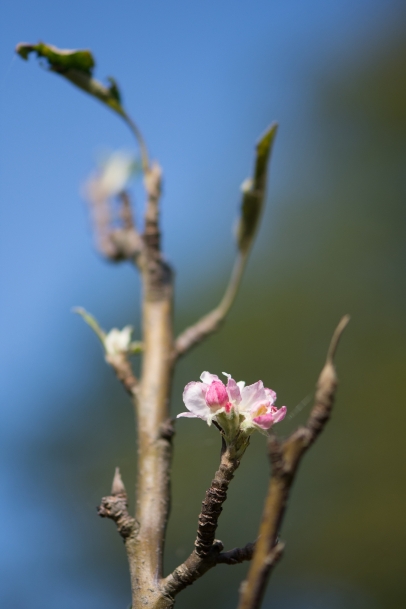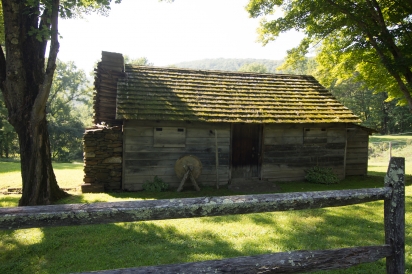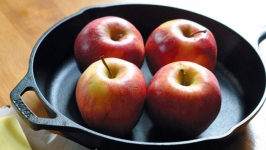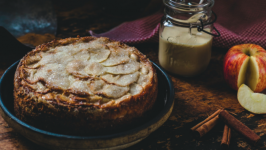The Eric Sloane Museum Reproduces an Historical Apple Orchard
In northwestern Connecticut, a small museum stands next to a newly established heirloom apple orchard, full of nascent trees that are historical giants, if not yet literal ones. By adding the orchard, the Eric Sloane Museum in Kent joins Mt. Vernon and Monticello as part of a small family of museums that host an heirloom orchard on their properties.
Eric Sloane (1905-1985), whose studio serves as the home for the museum, was an artist, a writer of over 30 books, and a collector of Americana and American tools. His study of early American life highlights the importance of the apple tree, which features prominently in his writing. In Diary of An Early American Boy: Noah Blake 1805 (a 19th-century diary preserved, printed, and expanded upon by Sloane), Sloane writes, “one may see why there was a law against cutting down apple trees in the earliest American days, for one tree provided raw fruit, cider for drinking, apple sauce, dried fruit, and vinegar.”
The Sloane Museum property, which is on the National Register of Historic Places and is a Connecticut State Archaeological Preserve, includes a cabin Sloane built to replicate the family home that Blake describes in his diary. The newly attendant orchard represents a portion of what a self-sufficient homesteader would have needed for survival.
“The Noah Blake Orchard was commissioned by the Board of Directors of the Friends of the Eric Sloane Museum, because of the centrality of the apple in much of Eric's written and painted record,” said Jim Mauch, founder of the Friends of the Eric Sloane Museum, who has worked closely with the museum for over a decade. “We made a decision to plant an orchard similar to what Eric described as the Blake Orchard in Diary of an Early American Boy. We were focused on an heirloom variety orchard and very much wanted an orchard that would have included some cultivated varieties common in 1805 America.”
The Wealthy, Wolf River, Roxbury Russet, and Westfield Seek-No-Further are some of the strains planted there. “What I was most adamant about was including a variety of apple tree known as the ‘Westfield Seek-No-Further,’” Mauch says. “It was an apple tree featured prominently in another of Sloane's books, A Reverence for Wood.”
Peter Montgomery of Montgomery Gardens in Warren, who specializes in heirloom apples and orchards, helped install the orchard and continues to tend to it. Montgomery visits the orchard regularly to examine the apple trees’ progress and address any issues the young trees face. “Colonial life is uninhabitable without apples,” Montgomery says. “People didn’t drink water. The average person drank 30 to 50 gallons of cider per year, and the pomace [the pulpy residue remaining after the fruit has been crushed during juice extraction] would have been fed to their animals or composted.”
The development of the orchard comes at a time when many farmers and gardeners are looking to our rustic past as a source of knowledge about sustainable agriculture, as well as methodologies for leveraging more use out of what we grow. In that respect, Eric Sloane has much to offer in the present. “[He] was a teacher,” says Jeffery Bischoff, a member of the Friends of the Eric Sloane Museum’s Board of Directors. “He didn't paint a maple tree without teaching us about maple sugaring. He didn't paint a grist mill without teaching us about 18th- and 19th-century milling.”
The newly installed orchard will help the museum continue Sloane’s legacy of preserving New England’s pastoral history while simultaneously teaching about rural life during this formative period in America’s history. It stands as a testament to Connecticut’s long history of apple growing and to the man who wanted us to remember it.
Eric Sloane Museum & Kent Iron Furnace: 31 Kent-Cornwall Rd. (Route 7), Kent; 860-927-3849









